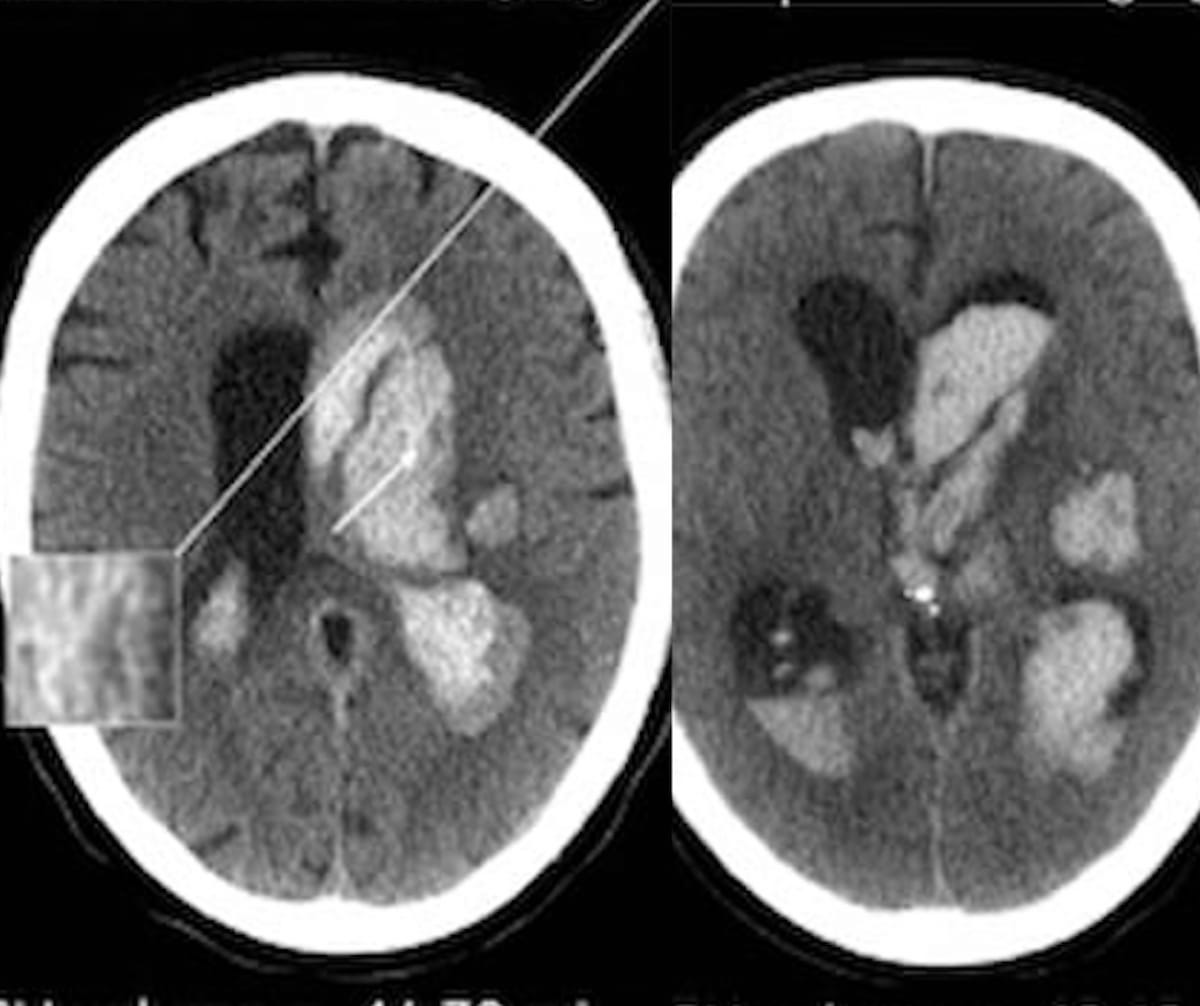Key Findings on Non-Contrast CT Signal Higher Complication Risks in Patients with Intracerebral Hemorrhage
In a subgroup analysis of patients with intracerebral hemorrhage who had intraventicular hemorrhage (IVH) growth, researchers found that hypodensities on non-contrast computed tomography (CT) were associated with more than double the risk for greater than 1 mL of expanded IVH (eIVH).
Hypodensities on non-contrast computed tomography (NCCT) brain scans double the risk for expanded intraventricular hemorrhage (eIVH) and irregular shape on NCCT has more than a 2.7-fold risk for delayed IVH (dIVH) in patients with intracerebral hemorrhage (ICH), according to findings from newly published research.
In the retrospective study, published earlier today in European Radiology, researchers reviewed NCCT data from 731 patients who were admitted to tertiary facilities in Germany and Italy for acute spontaneous ICH from January 2017 to June 2020. The study authors reviewed a variety of signs on NCCT, ranging from hypodensity and the black hole sign to satellite sign and irregular shape (defined, as per Barras shape scales I-V, as foci of hematoma margin irregularities in the largest hematoma region) to ascertain possible associations with the risk of IVH growth.
Over 25 percent (185 patients) of the study cohort had IVH growth and irregular shape on NCCT was associated with a 1.68 odds ratio (OR) for IVH growth, according to the study authors. In a subgroup analysis, the researchers found that hypodensities on NCCT were associated with a 2.06 OR for eIVH and irregular shape was associated with a 2.72 OR for dIVH.
“From a clinical perspective, NCCT features may help clinicians in the stratification and early identification of patients at a high risk of neurological deterioration because of IVH growth. … NCCT features may improve patients’ selection in future clinical trials, identifying subjects at a high risk of IVH growth and therefore more likely to benefit from hemostatic treatment,” noted lead study author Jawed Nawabi, Ph.D., who is affiliated with the Department of Radiology at Charite-Universitatsmedizin in Berlin, Germany, and colleagues.
Note the highlighted hypodensities in the admission non-contrast computed tomography (NCCT) imaging (left) and follow-up NCCT imaging (right) revealing expanded intraventricular hemorrhage (IVH) in a patient with intracerebral hemorrhage (ICH). Images courtesy of European Radiology.

(Editor’s note: For related content, see “RapidAI Gets FDA Nod for AI Assessment of Non-Contrast CT for Acute Stroke Triage” and “TeraRecon Launches AI-Driven Neuroimaging Platform.”)
The study authors noted that those with IVH growth had smaller hematoma volume, a higher frequency of hematomas in the basal ganglia and a shorter time between symptom onset/last seen well to imaging. Additionally, the researchers found that patients with dIVH had a higher frequency of lobar hematomas in comparison to study participants with eIVH, who had more deep bleedings and a higher volume of IVH on follow-up imaging.
In regard to study limitations, the authors acknowledged the retrospective nature of the study and emphasized that prospective research is necessary to validate the study findings. Nawabi and colleagues also acknowledged that the protocol for obtaining images with NCCT was not standardized across the participating study sites. They added that factors, such as blood pressure control and coagulopathy reversal, were not documented in the study and could have impacted the risk of IVH growth.
GE HealthCare Debuts AI-Powered Cardiac CT Device at ACC Conference
April 1st 2025Featuring enhanced low-dose image quality with motion-free images, the Revolution Vibe CT system reportedly facilitates improved diagnostic clarity for patients with conditions ranging from in-stent restenosis to atrial fibrillation.
The Reading Room: Racial and Ethnic Minorities, Cancer Screenings, and COVID-19
November 3rd 2020In this podcast episode, Dr. Shalom Kalnicki, from Montefiore and Albert Einstein College of Medicine, discusses the disparities minority patients face with cancer screenings and what can be done to increase access during the pandemic.
Can Photon-Counting CT be an Alternative to MRI for Assessing Liver Fat Fraction?
March 21st 2025Photon-counting CT fat fraction evaluation offered a maximum sensitivity of 81 percent for detecting steatosis and had a 91 percent ICC agreement with MRI proton density fat fraction assessment, according to new prospective research.